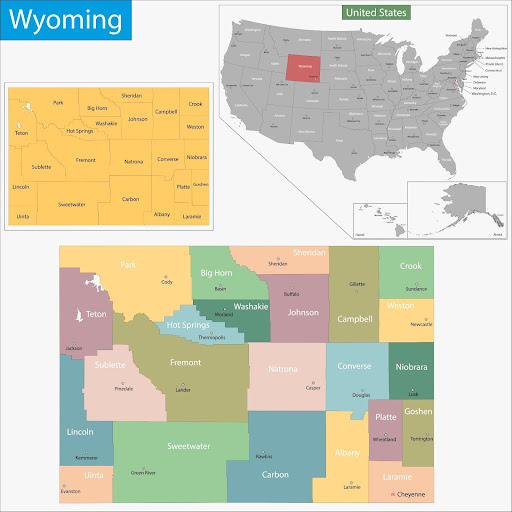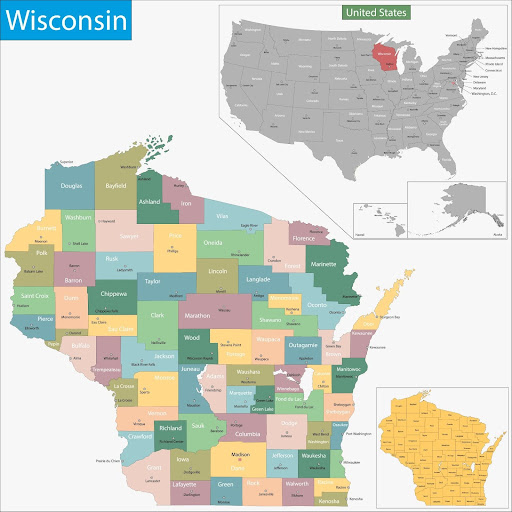Table of Contents
High winds, fast-moving grasses, and human proximity make Oklahoma one of the most volatile wildfire environments in the central U.S. For fire investigators, Oklahoma poses a unique challenge: fast escapes, rural ignition points, and a web of state, county, tribal, and volunteer jurisdictions.
This guide on wildland fire resources in Oklahoma is built for those realities. Whether you’re working your first red flag incident or reviewing cause and origin after a fatality fire, you’ll find the systems, contacts, and training infrastructure you need to operate effectively in Oklahoma.
Find what you need in our wildland firefighting resources overview.
Live Incident Updates & Maps
Stay current with Oklahoma fire activity, red flag conditions, and fire weather outlooks:
State Overview
Oklahoma is a crossroads of wind, fuel, and ignition. Fire behavior here is aggressive, and suppression windows are tight. For investigators, understanding the state’s ecological zones is mission-critical.
- Panhandle & Northwest Grasslands: Fine fuels dominate cheatgrass, CRP land, and open rangeland. Fires spread rapidly, especially under southwest winds.
- Central Oklahoma Cross Timbers: Mixed fuel beds with redcedar encroachment. Fires can ladder into trees or back into rural subdivisions.
- Southeast Hardwood Forests: Slower-moving fires with deeper duff. Topography plays a role here, along with increased human ignition from recreation.
- WUI Zones (statewide): From Norman to Owasso, the urban-rural interface is growing fast. Backyard burns, BBQ grills, and brush piles create daily ignition potential.
Wildfire Season Timeline
Oklahoma doesn’t have a fire season; it has fire windows. And they’re opening earlier, staying open longer.
- Late Winter–Spring (January–April): Peak season. Dormant fuels, high winds, and low RH lead to major outbreaks. Most investigator deployments occur here.
- Late Summer–Fall (August–October): A secondary window. Fuels recur again, and agricultural burns spike in frequency.
- Dry Spells (Year-Round): With a mix of climate zones, any prolonged dry period can create ignition potential. Investigators must stay alert year-round.
- Red Flag Days: The single most important predictor. Oklahoma’s major fires almost always coincide with red flag warnings and active weather fronts.
Key State Agencies Involved
- Oklahoma Forestry Services (OFS): The lead agency for wildland fire suppression, investigation, and training. OFS maintains state task forces, red card records, and fire weather prediction tools.
- Oklahoma Department of Agriculture, Food & Forestry (ODAFF): Parent agency of OFS. Supports fire prevention policy, funding, and coordination across counties.
- Oklahoma State Fire Marshal’s Office: Primarily handles structural fire investigations, but works alongside OFS in WUI or mixed-origin fires where jurisdiction overlaps.
- Tribal Fire Programs: Many tribal nations in Oklahoma operate their own wildland fire programs. The Muscogee Nation, Cherokee Nation, and Choctaw Nation all have suppression resources and may co-lead investigations on sovereign land.
- U.S. Forest Service & BIA Fire Programs: USFS manages Oklahoma’s federally protected lands, including the Ouachita National Forest. BIA oversees tribal fire operations and coordination with federal partners.
Local Wildland Firefighting Resources
The initial attack is largely driven by local response. Oklahoma relies on an extensive network of VFDs, many of which double as first responders to wildland ignitions. Coordination with OFS begins early for larger incidents, especially when aviation or task force support is needed.
List of Local/State/Federal Fire Response Agencies
- Oklahoma Forestry Services (Statewide): Operates task forces, engines, dozers, and aircraft. Investigators may collaborate with regional fire managers for suppression records and early reports.
- County-Based Volunteer Fire Departments (VFDs): Most of the VFDs are the first boots on the scene and are vital for witness statements and early fire progression intel.
- County Emergency Management: Plays a central role in ICS coordination and mutual aid. Investigators often interface here for resource tracking and report consolidation.
- Tribal Fire Agencies: Many tribal departments are NWCG-compliant and operate independently within reservation boundaries. Investigators must coordinate carefully to avoid jurisdictional overreach.
- Federal Fire Programs: USFS and BIA support suppression and investigations on their respective lands. All investigations follow NWCG and LEI protocols.
Contact Numbers and Emergency Links
- To Report a Wildfire: Dial 911
- Oklahoma Forestry Services Dispatch: 405-522-6158
- Fire Management Contact Page (OFS): https://ag.ok.gov/divisions/forestry-services
- Oklahoma Burn Ban Map: https://www.ok.gov
- Southern Area Coordination Center: https://gacc.nifc.gov/sacc
Training & Volunteering
Oklahoma’s wildland fire training system is tightly linked to NWCG standards. OFS offers regional fire academies, and most departments support seasonal firefighter onboarding and investigator track courses.
NWCG-Approved Academies and Centers
- Oklahoma Fire Service Training: Held annually in March at Eastern Oklahoma State College. Courses include S-130/190, L-280, and FI-210. Known for strong field exercises and active-duty instructor cadre.
- Tribal & Federal Programs: BIA and tribal fire programs regularly host joint NWCG sessions, including fireline safety, prescribed fire prep, and cause determination basics.
Volunteer and Seasonal Training Opportunities
- OFS Emergency Firefighter Program (EFF): Recruits seasonal personnel for suppression support. EFFs are often first on-scene and assist with post-fire patrol and fire perimeter preservation.
- VFD Wildland Development Grants: Funds gear and training for rural departments. Many VFDs partner with OFS or local academies for certification. Investigators benefit from working alongside red-carded volunteers familiar with local fire behavior.
- Eastern Oklahoma Fire Academy / Local Colleges: Institutions like EOSC and Kiamichi Tech offer fire science pathways that include wildland modules, often open to current firefighters or agency partners.
Stay Informed on Oklahoma’s Wildland Fire Landscape
In Oklahoma, fire doesn’t give you time to think. It demands action. Winds clock in at 30+ mph, the fire jumps the line, and investigators are often called in after the most crucial evidence has blown away.
Your prep matters more here. Know your dispatch contacts, stay sharp on OFS protocols, and if you’re working tribal land, check your jurisdiction twice. The more you know about local burn culture, fuel history, and terrain, the more likely you are to close your case clean.
FAQs
How do I report a wildfire in Oklahoma?
Dial 911 immediately. For non-emergency reports or to coordinate resources, contact OFS at 405-522-6158.
Who investigates wildfires in Oklahoma?
OFS leads on wildland fires unless jurisdiction falls to federal or tribal agencies. VFDs typically conduct the initial investigation on private land. The State Fire Marshal may assist in mixed-origin incidents.
Can I burn debris or pasture in Oklahoma?
Yes, but check local regulations. Statewide burn bans may be issued by the Governor. OFS and county emergency managers maintain the burn ban map at https://www.ok.gov/burnban.










